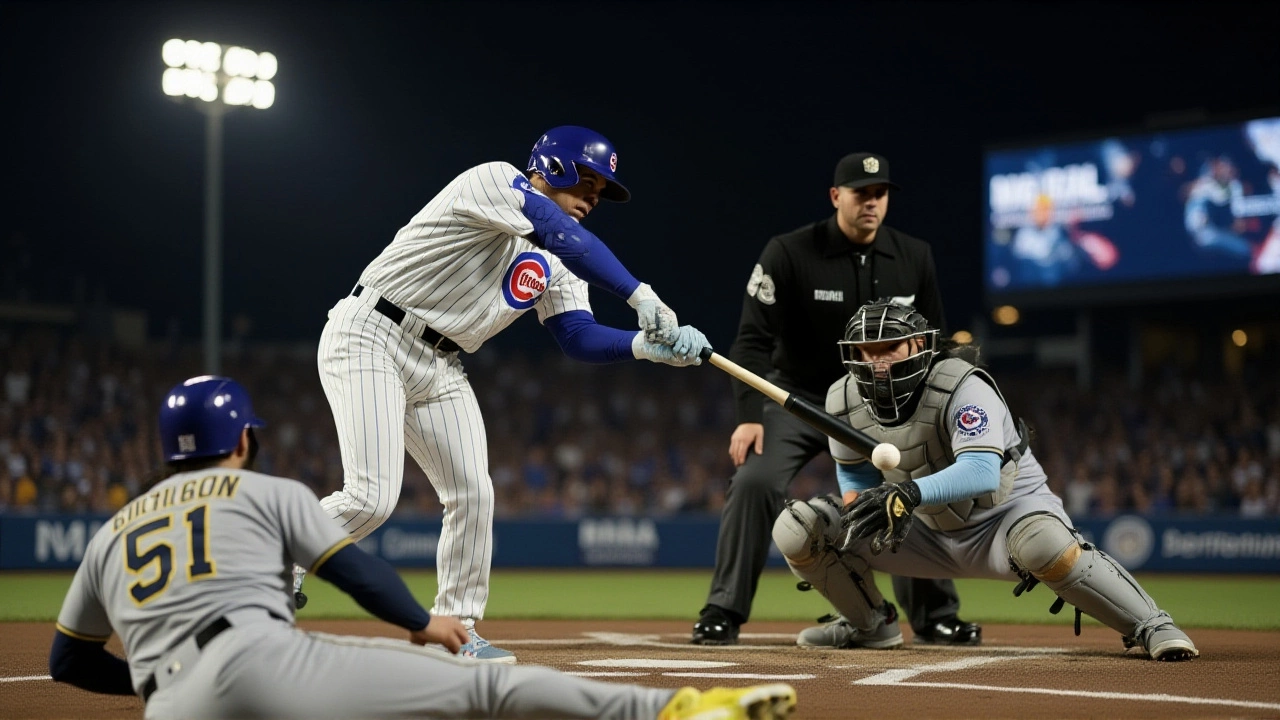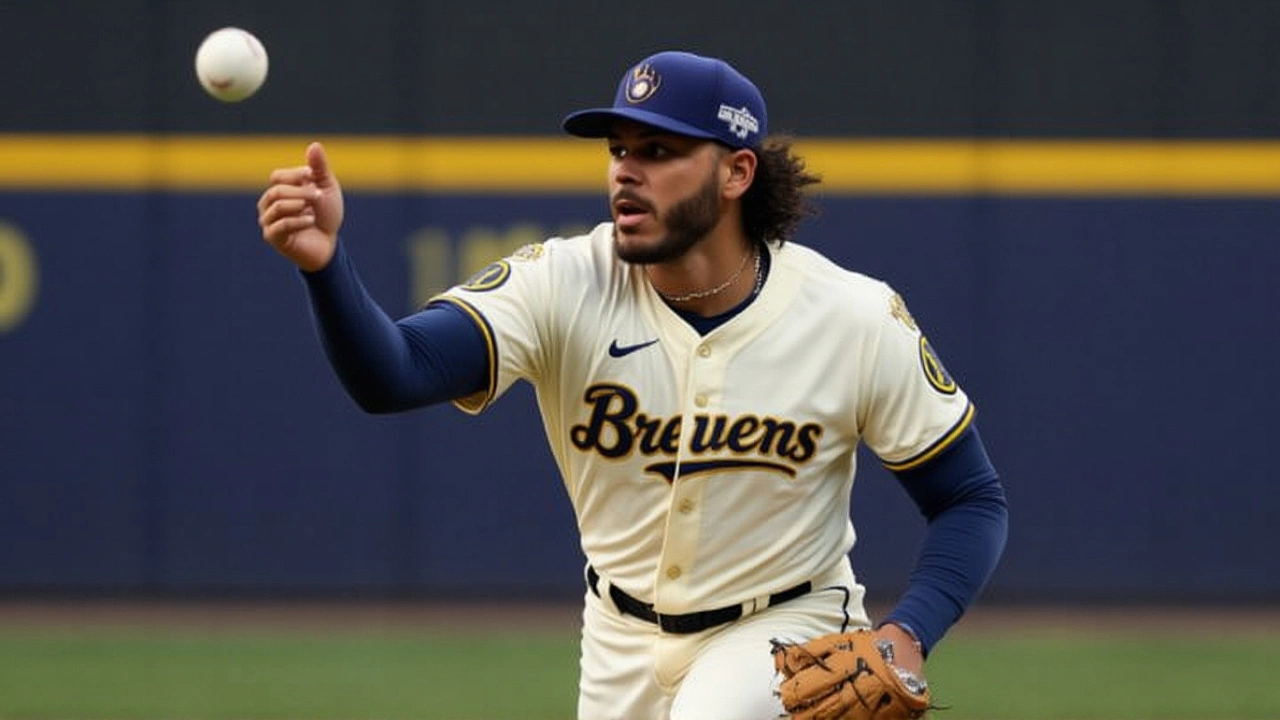When Freddy Peralta, the 28‑year‑old Dominican right‑hander, took the mound for the Milwaukee Brewers in NLDS Game 4 against the Chicago Cubs at American Family Field on October 9, 2025, the stakes could not have been higher. The Brewers had entered the postseason with what manager Pat Murphy described as "basically one‑and‑a‑half starters available," a thin rotation forced by the trade of Corbin Burnes to the Orioles and the lingering shoulder injury of Brandon Woodruff. Peralta’s regular‑season résumé—17‑6, 2.70 ERA, 204 strikeouts—made him the obvious ace, but his Game 4 performance raised eyebrows faster than a fastball past the plate.
Background: Brewers’ Rotation Woes
Since the 2024 offseason, Milwaukee’s starting staff has resembled a two‑car garage where one car keeps breaking down. Burnes’ departure in July 2024 left a void that Woodruff’s surgery in March 2025 only deepened. Murphy, who took over permanently in October 2023 after an interim stint, has been forced to stretch Peralta into a role that typically belongs to a seasoned ace. The pressure cooker scenario was crystal clear during spring training when Murphy told a nervous Peralta, "You're the guy. You're coming into the year the ace. And the ace has to post." That directive became the mantra for a team staring down the postseason with essentially two reliable arms.
Game 4 Breakdown: What Went Wrong
Peralta entered the game on four days’ rest, a schedule that would make most rotation doctors cringe. The first inning was, in the words of the Milwaukee Journal Sentinel, "nightmarish"—two quick singles followed by a solo homer that set a tone no pitcher wants. According to MLB.com’s official box score, he logged exactly 4.0 innings, surrendered three hits, three earned runs, one homer, and issued two walks while striking out six. He faced 17 batters and threw 84 pitches at a 53.5% strike rate. The Brewers ultimately fell 6‑0, and Peralta’s postseason ERA ballooned to 4.66 over 9.2 innings, a stark contrast to his 2.70 regular‑season mark.
The statistical dip was only part of the story. Video analysis after the game showed slight variations in his release point—what insiders called “pitch‑tipping.” In a YouTube interview on October 14, Peralta, flanked by teammates Abner Uribe and Jackson Chourio, admitted that the Dodgers were “picking up whatever they could” on his delivery. That admission hinted at a mechanical issue that could be exploited by any savvy lineup.
Post‑Game Reactions: Murphy, Peralta, and the Media
Murphy’s post‑game press conference was brief—just over two minutes—but packed with the kind of blunt assessment you hear in a locker‑room huddle. He didn’t mince words about the need to tighten up the bullpen and protect Peralta’s arm for a potential Game 5. "We have a plan," he said, "but we can’t afford another early exit like this." Peralta, in a similarly short interview, emphasized a fresh mindset for the next start, noting that the Cubs’ home runs were “part of the game” and that he would work on “finding that consistency.”
Meanwhile, the broader media narrative began to shift. A repeated line in articles was the discrepancy on MLB.com’s player page, which claimed Peralta’s only postseason appearance was a scoreless three‑inning outing in the NLCS—a claim at odds with the documented NLDS innings. The inconsistency underscored how volatile the story line around Peralta’s role had become.

Looking Ahead: NLCS Game 2 and the Road to Dodger Stadium
Fast‑forward to October 14, when the Brewers faced the Los Angeles Dodgers in NLCS Game 2. Peralta logged 5 2⁄3 innings, allowing three runs while striking out four, including a key first‑inning double‑play against future MVP candidate Shohei Ohtani and a clutch grounder from Will Smith. The Brewers briefly held a 1‑0 lead after Jackson Chourio’s first‑pitch homer off Dodgers starter Yoshinobu Yamamoto, but the lead evaporated in the second inning.
What’s clear is that the Brewers are now betting heavily on Peralta to carry them through the rest of the series. If he can tighten his mechanics and keep the pitch‑tipping to a minimum, he could still be the fulcrum that pivots Milwaukee’s fate. If not, the thin rotation might buckle under the Dodgers’ deep lineup, especially when the series shifts to Dodger Stadium.
Why This Matters: The Bigger Picture for Milwaukee
For a market that has endured decades of postseason droughts, the Brewers’ reliance on a single arm feels both heroic and precarious. A strong showing from Peralta could cement his status as a franchise cornerstone, buying the front office time to rebuild the rotation. Conversely, another stumble could reignite calls for a faster rebuild, perhaps pushing Milwaukee to pursue trade partners or free‑agent options before the 2026 season.
Fans, already accustomed to roller‑coaster seasons, are now watching each pitch as if it were a financial ticker. The Brewers’ front office knows that every win‑or‑loss swing impacts ticket sales, merchandise revenue, and the city’s overall baseball morale. In short, Peralta’s next outing isn’t just a game—it’s a litmus test for Milwaukee’s short‑term championship hopes.
- Key Fact: Peralta’s regular‑season ERA was 2.70, ranking 7th in the NL.
- He struck out 204 batters, placing him in the top ten league‑wide.
- The Brewers entered the 2025 postseason with effectively only two reliable starters.
- Game 4 NLDS loss saw Peralta give up a solo homer in the first inning.
- Post‑Game ERA sits at 4.66 across 9.2 postseason innings.
Frequently Asked Questions
How does Freddy Peralta’s performance affect the Brewers’ chances in the NLCS?
Peralta is essentially the Brewers’ ace, meaning his ability to pitch deep innings directly determines whether the bullpen is overtaxed. If he can limit runs and avoid pitch‑tipping, Milwaukee stays competitive; a repeat of Game 4’s early exit would force the team to rely on a thin bullpen against a potent Dodgers lineup.
What caused the discrepancy on MLB.com regarding Peralta’s postseason appearances?
The site listed only a three‑inning, scoreless NLCS start, contradicting box‑score data from both the NLDS and NLCS. The error likely stems from a data‑entry mix‑up during the rapid updates that accompany playoff games.
Who are the other Brewers pitchers that could relieve Peralta if he struggles?
Beyond Peralta, the Brewers have Josh Hader in high‑leverage relief, and a back‑end of J.P. Feyereisen and Caleb Hamilton. However, none have the starter pedigree to log six innings against a lineup like the Dodgers.
What adjustments are Milwaukee coaches planning for Peralta’s next start?
Coaches have asked Peralta to shorten his wind‑up slightly to reduce the risk of tip‑off, and they’re emphasizing a more aggressive use of his cutter to keep hitters off balance. Additionally, they’re monitoring his pitch count closely to avoid over‑taxing his arm after the four‑day rest.
How have Brewers fans responded to the rotation crisis?
Fans have expressed a mix of nervous optimism and frustration on social media. While many are rallying behind Peralta as the team’s lone ace, others worry that the lack of depth could jeopardize a deep playoff run, urging the front office to prioritize rotation upgrades in the off‑season.

